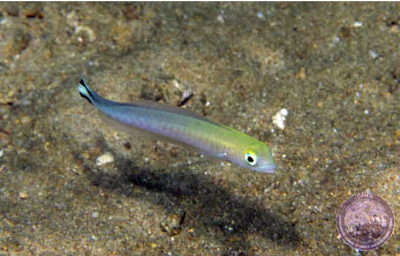Tilefish Information
Tilefish are a marine species of fish belonging to the family Malacanthidae. They are sometimes called blanquillo, and there exist at least 5 genera and 45 species of tilefish. Tilefish can be separated further into two subfamilies: Malacanthinae and Latilinae. Some taxonomists believe that the Latilinae subfamily is distinct enough to make up its own separate family though. All species of tilefish have an elongated, compressed body and one long dorsal fin base. Their teeth are small and villiform but nonexistent on the roof of the mouth. Tilefish of the subfamily Malacanthinae are more slender with more fin-ray elements in their dorsal and anal fin. Tilefish of the subfamily Latilinae have deeper bodies and a relatively steep snout profile. There have fewer ray-fin elements in their dorsal and anal fin too.

While being a marine species, some tilefish have also been spotted in brackish water. Their typical range is tropical and warm temperate seas of the Atlantic, Indian and Pacific. Depending on the species, they can be found at depths anywhere between 10-500 m. Tilefish feed on a wide variety of small fish and invertebrate species, including eels, anchovies, lanternfish, polychaetes, brittle stars, urchins, molluscs, ascidians and bryozoans. Some species will also consume zooplankton. All species of tilefish live in a burrow they create themselves from gravel or sand substrate. They like to make them at the base of reefs or piles of rocks, often in canyons or at the edge of steep cliffs. Tilefish may be found solitary or in pairs, like the flagtail blanquillo, hovering near their burrows so they may retreat quickly inside when disturbed.
Tilefish have an interesting history. The species was unknown until 1879 and became a popular commercial fish due to its abundance in the western Gulf Stream. However, in 1882, hundreds of millions of dead tilefish surfaced after a series of severe storms. No further living tilefish were seen for the next 10 years, and commercials harvests could not resume until long after that. The biggest commercial tilefish species is also the largest at 3 ft long and simply called the tilefish (Lopholatilus chamaeleonticeps). It’s suspected that the upwelling of cold waters, caused by the storms, invading the fishes’ normally warm-water habitat is responsible for the previous massive die-off. Surprisingly, there are no tilefish species currently endangered. Still, some areas have regulations in place to minimize bycatch. Most fishing gear used to catch tilefish rarely contacts the ocean floor too, minimally impacting the habitat.
